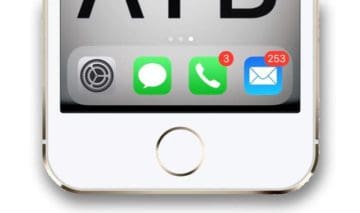
When we receive an email, we think of it as “containing” the images included. The email program at the receiving end determines which format to display. Called “multi-part mime” and handled transparently by the email program sending the message, it’s typically used to include both HTML and plain text formats. It’s also possible to send a single email containing the same message encoded in different ways. HTML email is by far the most common format used for email today.

Like rich text email, images can be embedded into the body of HTML email, as well as attached. Almost everything you can do with a webpage can be done in HTML mail: colors, fonts, formatting, and more.

Some email programs recognize attachments that happen to be images, and either display them after the message or display thumbnails of the images. They usually appear as icons after the end of the message body, and you typically need to click on the icon to open or display them.

These are files of any kind that accompany an email message. Images can be placed in email in either of two ways: Problems converting between email formatsīefore we look at each of those, we need to define a couple of things.Issues relating to how, and whether, images accompany an email message.There are three common reasons why pictures don’t display in an email. Three reasons for pictures not showing in email I’ll review where the incompatibilities are most common, some of the ways pictures can get lost, and one or two workarounds that might help you view those all-important Corgi pictures that someone just sent you. It’s both frustrating and puzzling when it happens.Įmail has evolved over the years, and as a result, things aren’t always as compatible as we’d like them to be. Someone forwards me an email with humorous pictures (or better yet, pictures of Corgis), and some or all of them don’t display. In fact, it happens to me from time to time as well. Other names may be trademarks of their respective owners.This is, unfortunately, an extremely common question.
#WHY CANT MY AOL EMAIL WORK ON MY NEW MAC IPAD ANDROID#
The Android robot is reproduced or modified from work created and shared by Google and used according to terms described in the Creative Commons 3.0 Attribution License. Microsoft and the Window logo are trademarks of Microsoft Corporation in the U.S.

Alexa and all related logos are trademarks of, Inc. App Store is a service mark of Apple Inc. Mac, iPhone, iPad, Apple and the Apple logo are trademarks of Apple Inc., registered in the U.S. Android, Google Chrome, Google Play and the Google Play logo are trademarks of Google, LLC. Firefox is a trademark of Mozilla Foundation. or its affiliates in the United States and other countries. NortonLifeLock, the NortonLifeLock Logo, the Checkmark Logo, Norton, LifeLock, and the LockMan Logo are trademarks or registered trademarks of NortonLifeLock Inc. LifeLock identity theft protection is not available in all countries. The Norton and LifeLock Brands are part of NortonLifeLock Inc.


 0 kommentar(er)
0 kommentar(er)
